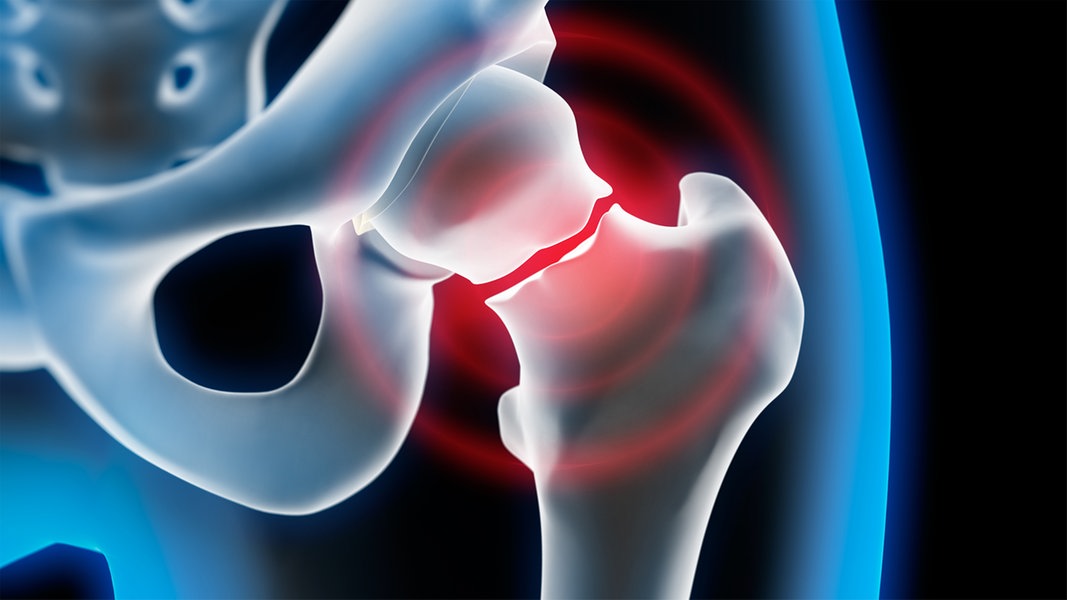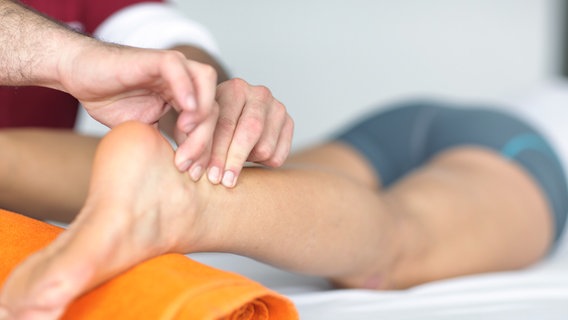Status: 03/20/2023 09:34 a.m
If not enough new bone tissue has formed in the event of a fracture after three months, doctors speak of a pseudarthrosis. Which measures help now?
Once you have slipped, stumbled and fallen unfortunate – bones can easily break in a fall. Although this is extremely painful and uncomfortable, bones have very good regenerative properties and fractures usually do not pose a problem for modern medicine.
Definition: What is nonunion?
The situation is different when the bone simply does not want to heal. Doctors speak of a so-called pseudarthrosis or pseudoarthrosis when six months after a fracture does not heal. If not enough new bone tissue has formed between cracks or fractures by then, further measures are required.
Pseudarthrosis: Infection can be the cause
If the bone becomes infected as a result of the accident itself or during the operation, this can lead to the formation of a pseudarthrosis. Infected tissue cannot form stable bone because infection interferes with the mineralization of the new bone tissue, as does premature loading or poor circulation from diabetes or cigarette smoking. If the bone is infected, the infected bone material must be surgically removed, even if this widens the fracture gap and delays healing.
Deficiencies in vitamin D and calcium can impair healing
Bones are living organs that are constantly being built up and broken down – a lifelong permanent construction site. Special cells break down old bone tissue, while others build new bone. The most important building material is calcium. Vitamin D improves its absorption. In addition, phosphate is necessary to make the new bone tissue stable.
However, if the body does not have enough calcium and phosphate available, a fracture cannot heal well, even if the operation has provided the best possible conditions, the fragments are perfectly aligned and fixed with screws. Unfortunately, this is often overlooked.
Therapy with vitamin D, calcium and exercise
If there is a lack of vitamin D and calcium, this can be compensated for with a simple supplemental therapy with tablets, and the bone can be made to heal. However, with a sufficiently high-calcium diet, supplemental calcium can generally be avoided. Movement is also important. It stimulates blood circulation and thus brings the necessary nutrients to the fracture points.
It is important to find the right balance between stress and relief. Because if the load is too low, the fracture point remains undersupplied, while too much load destroys the bone tissue that has not yet hardened. Special physiotherapy, which puts more pressure on the bones, can also achieve the desired result. Bone cells are stimulated to grow by the additional pressure, so that the desired bone substance is formed.
Ultrasound supports healing of a pseudarthrosis
Even low-dose ultrasound can possibly support the healing process. A small device sets the underlying tissue in motion with pulsed ultrasonic waves and thus stimulates genes, proteins and special growth factors that are important for bone healing. However, this treatment is not paid for by the health insurance companies, because its effect has not yet been proven by large studies.
Alternative therapy: implant bone tissue
If none of these measures help, the only option is usually an operation, in which various techniques can be used, depending on the previous treatment. If fixation screws have already been used in a previous operation, it may be sufficient to turn them to stimulate the bone. In the so-called spongiosa plastic, on the other hand, your own bone tissue from the iliac crest is implanted in the affected areas. Endogenous growth substances from the blood plasma can also help.
experts on the subject
Further information


